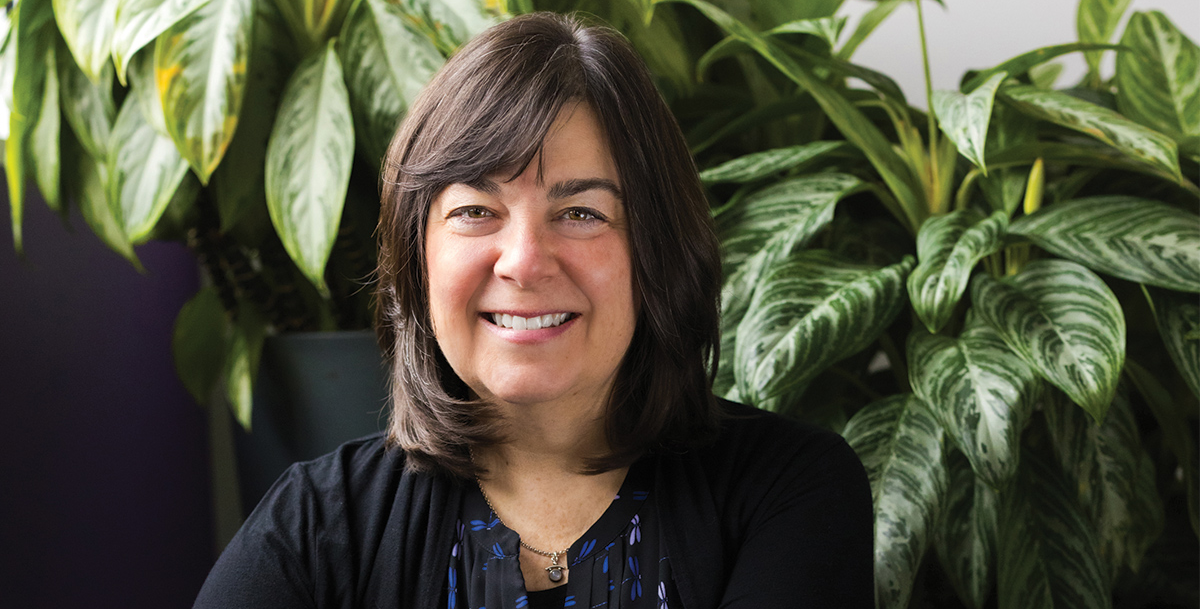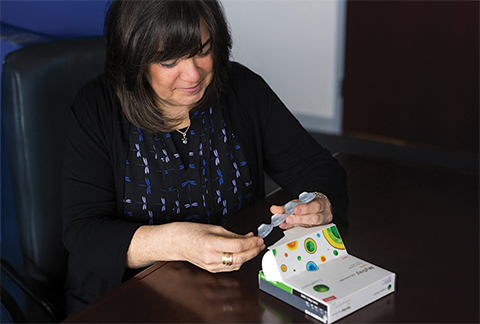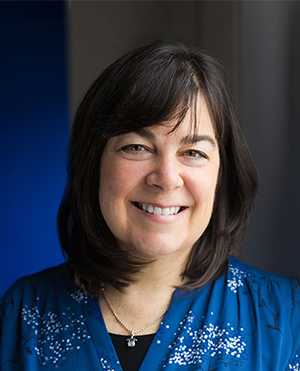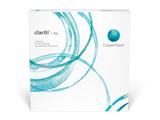You are here
CREATING A WAVE OF CHANGE

At CooperVision, our sustainability journey is truly powered by our people. Meet Carol Herring, Global Packaging Program Manager based in our Victor, New York office. Carol’s story is a testament to how one person can have a pivotal impact on the work we do as we strive to eliminate waste and unnecessary packaging to reduce our environmental impact where possible.1
FIND ALL THE PLASTIC
Carol is one of the key minds who helped to bring our plastic neutrality initiative to life. With the goal of offsetting CooperVision’s a portion of our plastic footprint, we had to start with understanding how much plastic we put out into the world.1 And that’s where materials and packaging expert Carol came in. With a bachelor’s degree in Packaging Science, there was no better person for the job.
According to Carol, she had one task when it came to our finished products and packaging: “find all the plastic”. Thinking about our range of products and their packaging size options, this had the potential to be a daunting task. So, “we started small,” says Carol. Starting with a single product – clariti® 1 day - she started to identify all the places where “plastic is hiding,” including in all the various packaging formats, and measured their weight.*†‡2

“Packaging has many components. It’s a blister, foil, and a carton. And we have different pack formats – such as 30 packs and 90 packs,” Carol explains. “I would take, for instance, a 30-pack which meant we have 30 blisters and they're all plastic. They weigh ‘this’ much.” She says, “that was the easy part.” From there, she started to tackle the more complex calculations. “If you think about our cartons and labels, those materials sometimes are blended materials. It took a little bit more digging in terms of defining exactly how much plastic was in those components. And then you get into the glues, printing inks, and coating, and that was even more complicated.”
By taking an all-inclusive approach to where plastic appears, “we were purposely being conservative about it,” states Carol. People may not think to include ink because “it's such a small component of the weight.” But Carol left no stone unturned. She made sure she captured all forms of plastic found in our products and packaging, no matter how small, from the lid dock, which is a foil polypropylene laminate, to the residual resin in the packaging, to the adhesives, inks, and coatings on the cardboard, because every piece of plastic counts when we want to truly understand the amount of plastic we’re putting out in the world.
A COLLABORATIVE EFFORT
“I started working on this project by myself and within six months it had expanded to include other contributors,” says Carol. “When I needed to, I worked with our suppliers and factories. For instance, there’s the glue that the supplier puts on the carton, and then there's glue that we apply during our own process.” It all needed to be measured. As the project grew, Carol was joined by a team of packaging co-op students who helped to calculate and document the weight of all of the plastic found in our products and packaging.
But after determining the amount of plastic in clariti® 1 day, her work was far from done. She then applied the methods and approaches to finding all the plastic across CooperVision’s portfolio of products – expanding the measurement initiative to other products and packaging formats. What started out as a project at Carol’s desk has since expanded to a Sustainability Subteam with members across CooperVision’s packaging and distribution sites that all share a passion for sustainability.
BRINGING THE PLASTIC NEUTRALITY INITIATIVE TO LIFE

Through her efforts, Carol collected enough data to form a comprehensive picture of the plastic in our products and packaging. Her calculations formed the foundation for CooperVision’s plastic neutrality partnership with Plastic Bank. CooperVision funds the collection and recycling of ocean-bound plastic equivalent to the weight of plastic used across a range of our participating soft contact lenses, including the lens, blister and packaging components, that are sold and distributed across 27 countries throughout the Americas, Europe, and Asia-Pacific.§1 Since its inception, our partnership with Plastic Bank has prevented the equivalent of hundreds of millions of plastic bottles from entering the oceans|3 – and eye care professionals and wearers, by simply prescribing and wearing CooperVision’s plastic-neutral contact lenses, are able to contribute to our sustainability journey.¶**2
“We're fortunate to be able to collaborate with Plastic Bank,” says Carol. She feels gratified to know that her work helped make the net plastic neutrality initiative a reality and is impacting not only the planet, but also people and communities where plastic pollution and poverty rates are at an all-time high.4 “This thing I was doing at my desk fits into a system that is helping people a world away. We know that the people in these communities are getting the opportunity to earn a wage. Hopefully, they’re able to improve their lives and the lives of their families while contributing to an effort that helps our planet.”
SUSTAINABILITY IS A JOURNEY, NOT A DESTINATION
Looking back, Carol says she had no idea how far the impact of this project would reach, not only through CooperVision’s partnership with Plastic Bank, but even in her own day-to-day life. “By forcing me to think about the amount of plastic CooperVision puts out into the world, it made me think about other products I use as a consumer. I don’t think I’m doing anything at home without thinking about sustainability.” She has become more thoughtful of the packaging in food she purchases, considered ways to not waste food including composting, and is more conscious about recycling at home. “When I’m talking about sustainability every day at work, it becomes more top-of-mind in everything else I’m doing. Now I’m thinking about all of the things that I can do to reduce my own personal carbon footprint.”

With this increased awareness, Carol has also given more thought to the growing number of customers and wearers who are more considerate of packaging choices and how to best dispose of them, and what that means for CooperVision’s sustainability journey. “In the realm of packaging, sustainability will always be important in terms of design and material choice,” Carol explains. She believes it’s CooperVision’s responsibility to find ways to make our packaging more sustainable. “Plastic is a critical part of delivering a quality product, but how do we use and offset plastic in the best way possible for people?”
Carol and the Sustainability Subteam are exploring ways to answer this question and others like it to advance the field of packaging. “There are great projects happening at our different sites around the world,” Carol says. “There is no project that is too small, and collectively, these projects have a huge impact.” Thanks to Carol and many others across CooperVision who have a passion for sustainability, we are able to progress our sustainability journey by thoughtfully designing our products and packaging†† to make efficient use of resources while starting to reduce our carbon footprint.‡‡§§5
To learn more about CooperVision's plastic neutrality efforts click here.
Explore more and see how we're taking steps towards a brighter tomorrow.
* Based on top 4 global contact lens manufacturers.
† clariti® 1 day is defined as orders and includes clariti® 1 day sphere, clariti® 1 day toric, and clariti® 1 day multifocal product sold & distributed by CooperVision in the US.
‡ Net plastic neutrality is established by purchasing credits from Plastic Bank. A credit represents the collection and conversion of one kilogram of plastic that may reach or be destined for waterways. CooperVision purchases credits equal to the weight of plastic in clariti® 1 day orders in a specified time period. clariti® 1 day plastic is determined by the weight of plastic in the blister, the lens, and the secondary package, including laminates, adhesives, and auxiliary inputs (e.g. ink).
§ Plastic used in participating CooperVision soft contact lens products is determined by the weight of plastic in the blister, the lens, and the secondary package, including laminates, adhesives, and auxiliary inputs (e.g. ink). The determination does not include plastic used during the manufacturing process for both these products and their packaging.
| CooperVision, through its collaboration with Plastic Bank, has collected and converted approximately 5.3M kg of plastic destined for waterways as of January 2024. Using Plastic Bank's metric of 1kg of plastic equaling 50 standard 202mm bottles, that will be the equivalent of approximately 263.7M plastic bottles not reaching our oceans.
¶ clariti® 1 day, MyDay® daily disposable, Biofinity®, and MiSight® 1 day orders includes products sold and distributed by CooperVision in participating countries.
** Net plastic neutrality is established by purchasing credits from Plastic Bank. A credit represents the collection and conversion of one kilogram of plastic that may reach or be destined for waterways. CooperVision purchases credits equal to the weight of plastic in clariti® 1 day, MyDay® daily disposable, Biofinity®, and MiSight® 1 day orders in a specified time period. clariti® 1 day, MyDay® daily disposable, Biofinity®, and MiSight® 1 day plastic is determined by the weight of plastic in the blister, the lens, and the secondary package, including laminates, adhesives, and auxiliary inputs (e.g. ink).
†† Refers to continuous manufacturing improvement processes undertaken by CooperVision to increase efficiency.
‡‡ Carbon footprint is limited to Scope 1 and 2 emissions, defined as: Scope 1 emissions are direct emissions from owned or controlled sources. Scope 2 emissions are indirect emissions from the generation of purchased energy.
§§ CooperVision's 2022 Environmental, Social, and Governance Report.
References:
1. CVI data on file, 2024.
2. CVI data on file, 2022.
3. CVI data on file as of 1/2024.
4. Plastic Bank. https://plasticbank.com/what-is-plastic-bank-all-about-and-how-can-i-get-involved/. Accessed Jan 25th 2024.
5. CVI data on file, 2023.
16100





